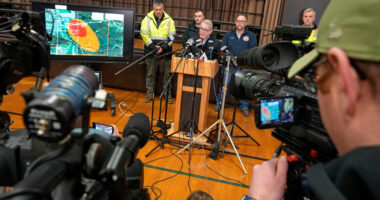
Available jobs in the U.S. rose to another record high at the end of June, pushing openings above the number of unemployed Americans seeking work, a sign of an unusually tight labor market.
Unfilled job openings rose by 590,000 to a seasonally adjusted 10.1 million in June, the highest level since record-keeping began in 2000, the Labor Department said Monday. The increase was driven by industries such as professional and business services, retail and the accommodation and food services, as pandemic restrictions continued to ease that month and consumers were more willing to dine out and travel.
The June increase in job openings came ahead of an uptick in cases tied to Covid-19’s Delta variant. Private measures of job postings through July showed openings remained elevated, though they began to plateau as hiring improved. The continued high number of openings indicates that the variant, so far, isn’t affecting hiring plans.
The number of job openings in June exceeded the 9.5 million people who were unemployed that same month. To be counted as unemployed, a person must be available and looking for work.
The gap between openings and unemployment shows an unusual tightness in the labor market. From 2000 to 2018, there were more unemployed workers than available jobs. That flipped in early 2018, when the unemployment rate pushed toward a 50-year low.
Some economists say the recent disparity might be due to a skills or geographic mismatch between workers and available jobs. Data released Monday showed openings were revised higher in May to exceed unemployment that month as well, and the gap between openings and jobless people widened in June.
“We have fewer people in the labor market now than we did before Covid,” said Julia Pollak, a labor economist at job-search site ZipRecruiter. And multiple waves of federal economic stimulus, including direct payments and enhanced unemployment benefits, means “businesses have surged back far more quickly than job seekers.”
Employers have responded to the tight labor market by raising wages and offering retention and hiring bonuses, she said, adding the lack of available job candidates has created opportunities for young workers because some employers are reducing requirements for new hires.
Monday’s report also showed the rate at which workers quit their jobs, a proxy for confidence in the labor market, rose in June to just below the record high touched in April.
People quitting their jobs may show they are seeking remote-work positions, which became a cornerstone of the labor market throughout the pandemic, Ms. Pollak said. ZipRecruiter surveys show more than half of job seekers say that they would prefer remote work.
According to ZipRecruiter data, the number of job openings fell modestly in July, but remains elevated by historical standards. Ms. Pollak said the decrease in July likely reflects seasonal factors and shouldn’t be seen as a sign of caution on the part of employers about the Delta variant.
Data from job search site Indeed also showed job postings declined slightly in late July, but remain well above pre-pandemic levels. The drop primarily reflected fewer available jobs in manufacturing, construction and warehousing and transportation—sectors hit by supply shortages—rather than the Delta variant, said Indeed economist Jed Kolko.
Employers added 943,000 jobs to payrolls in July, the best increase in 11 months according to the Labor Department, and unemployment fell. Those could be signs that businesses were increasingly able to fill open jobs this summer.
Monday’s Labor Department report showed the highest rate of job openings in June was in the South. Broadly, the labor market in the South, where business restrictions were less severe, has recovered from the pandemic more fully than the rest of the country. The West and Northeast, which includes New York and California where some restrictions were in place into June, had the lowest rate of job openings.
Copyright ©2021 Dow Jones & Company, Inc. All Rights Reserved. 87990cbe856818d5eddac44c7b1cdeb8









